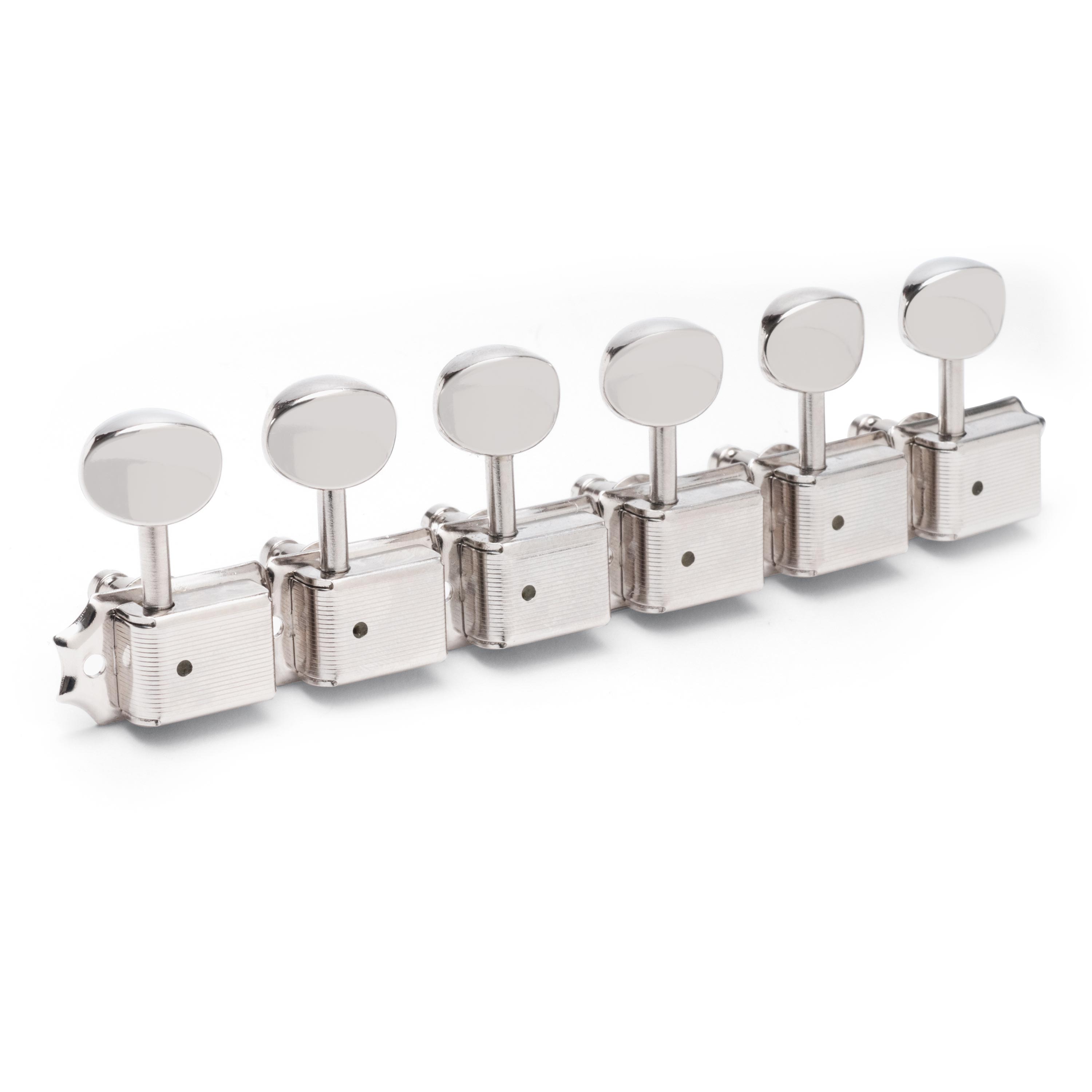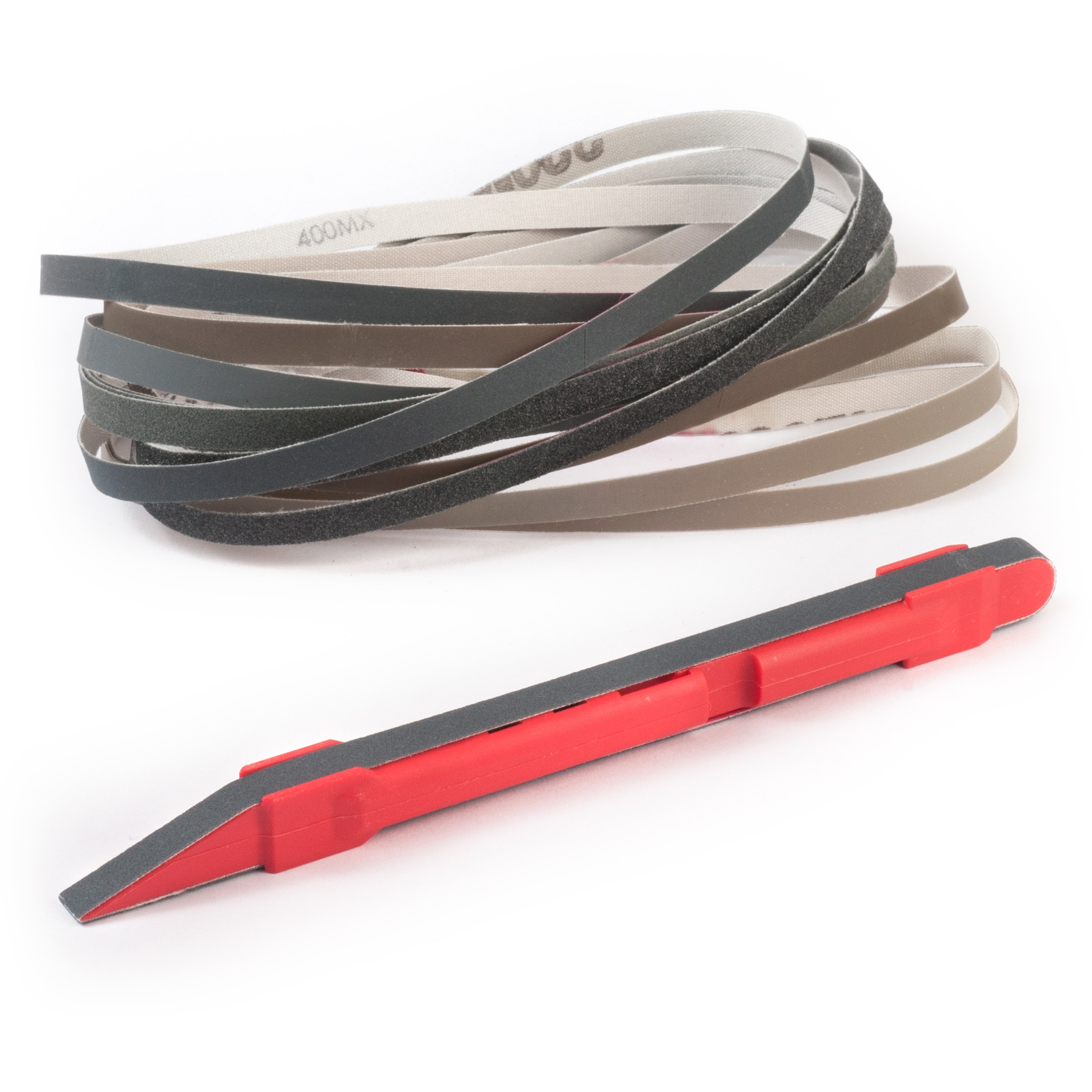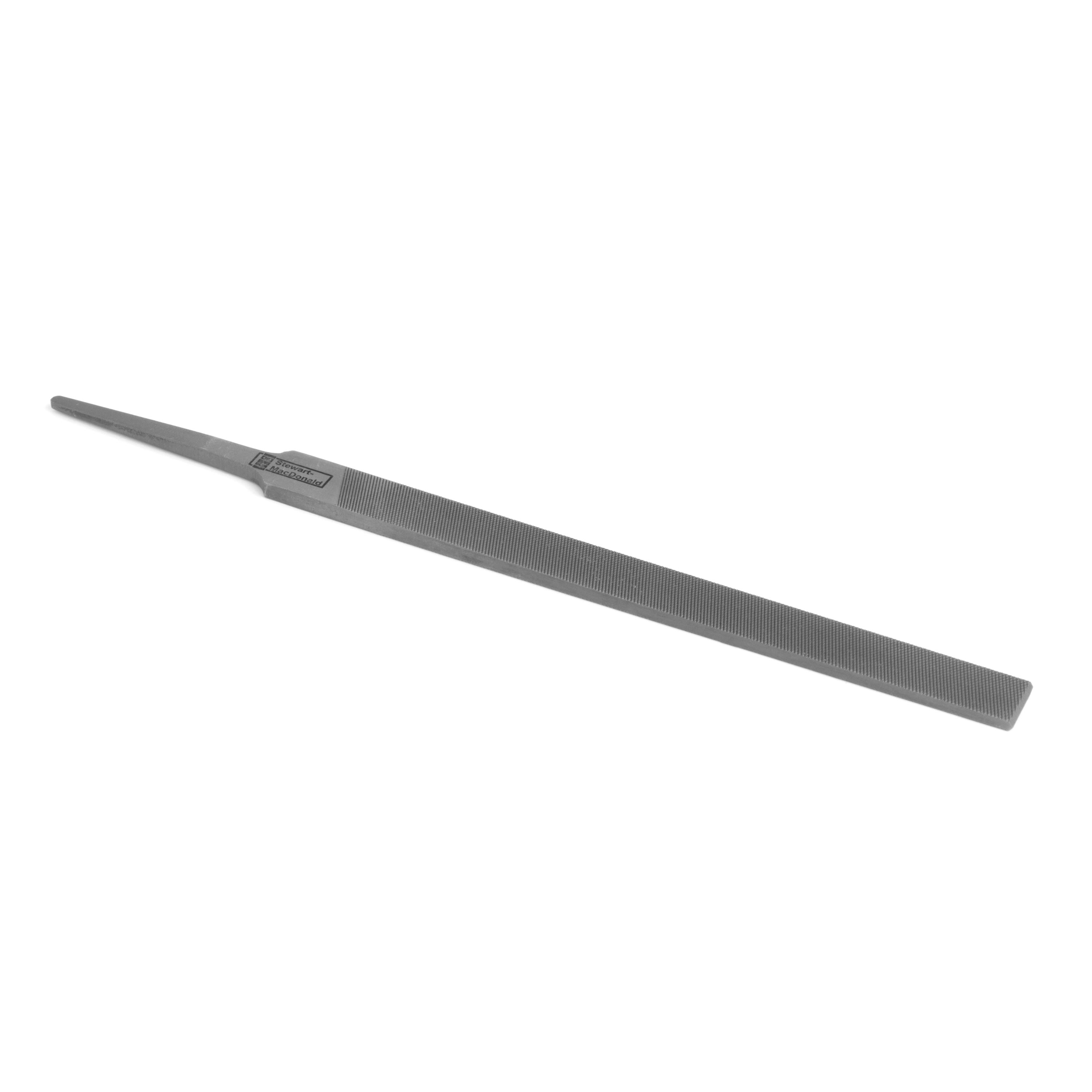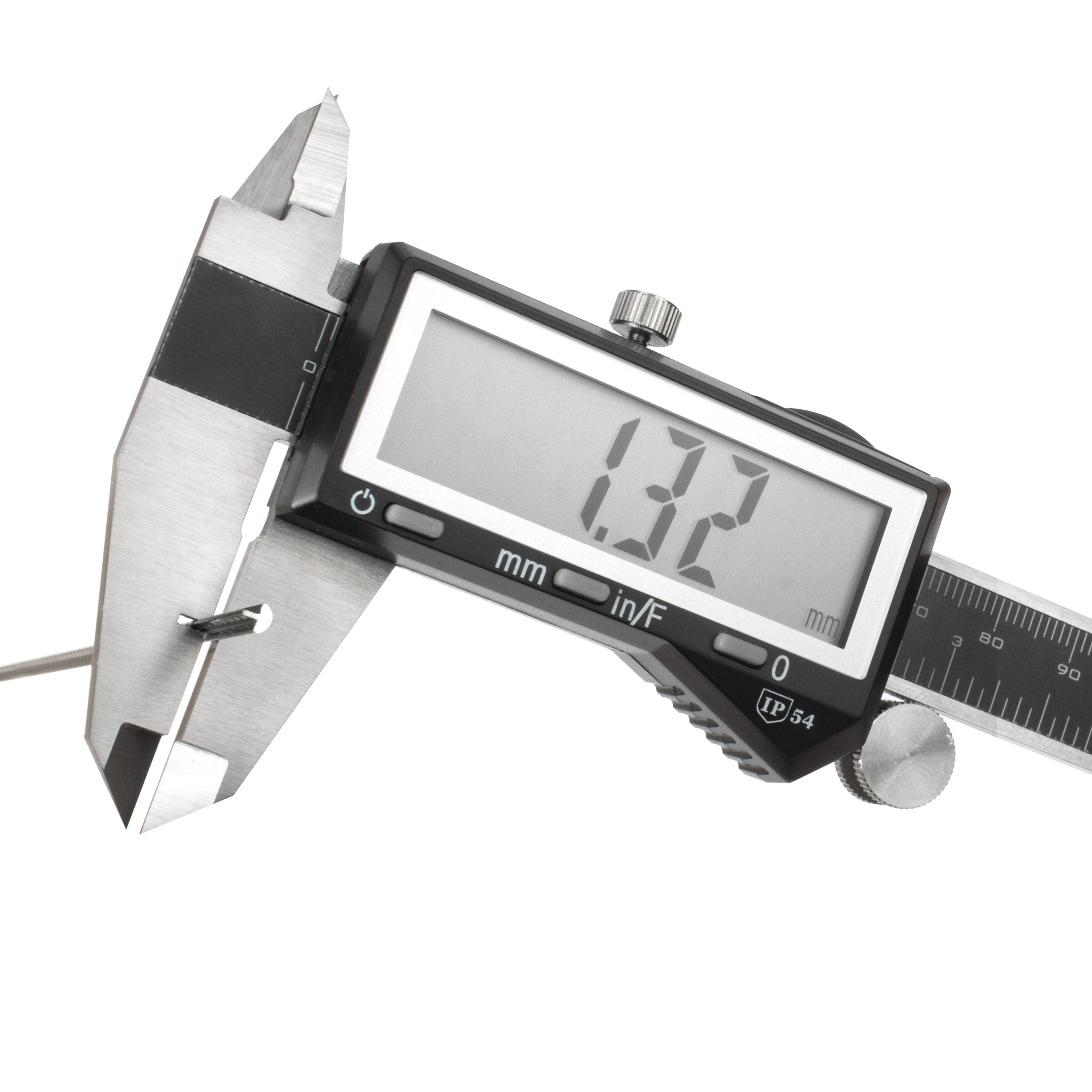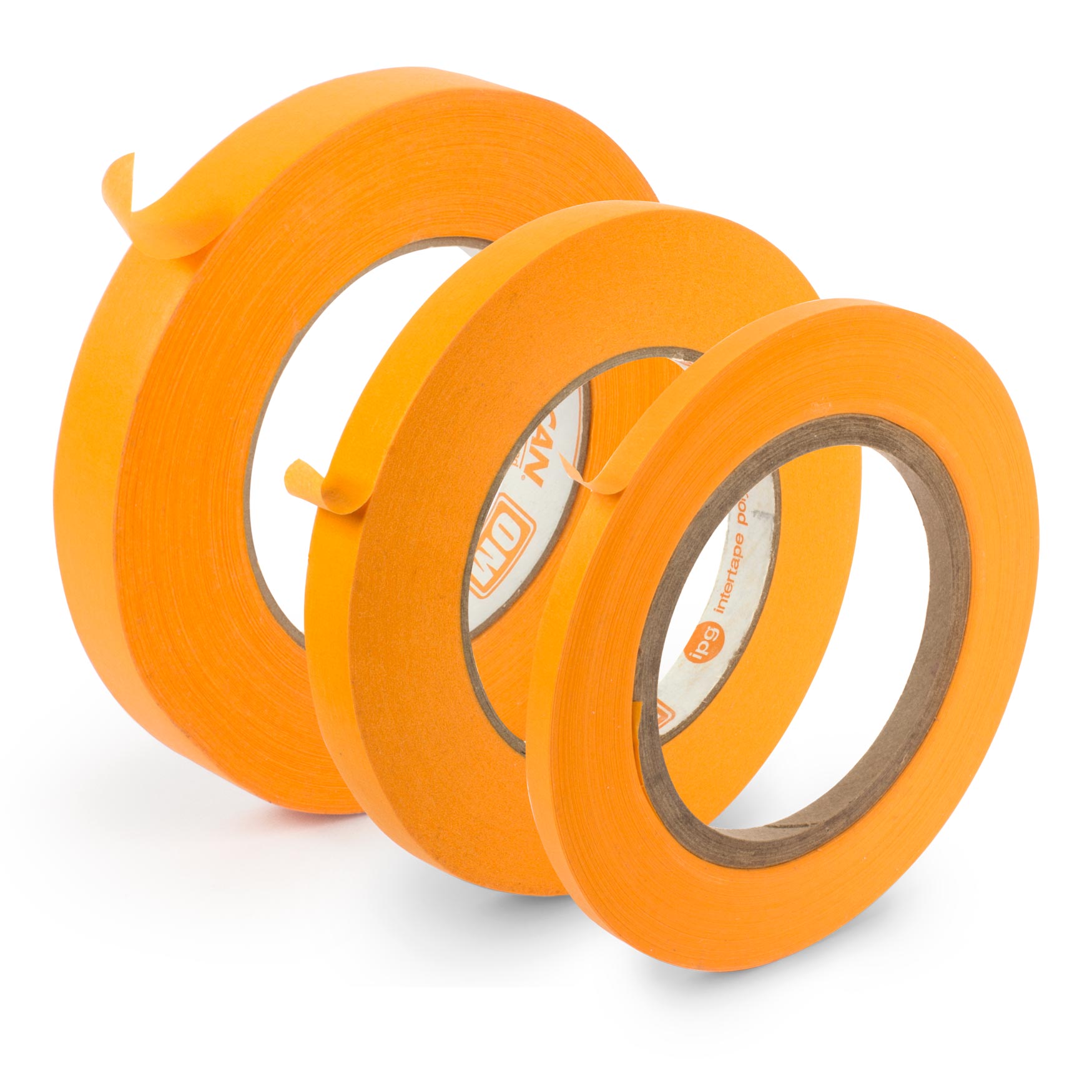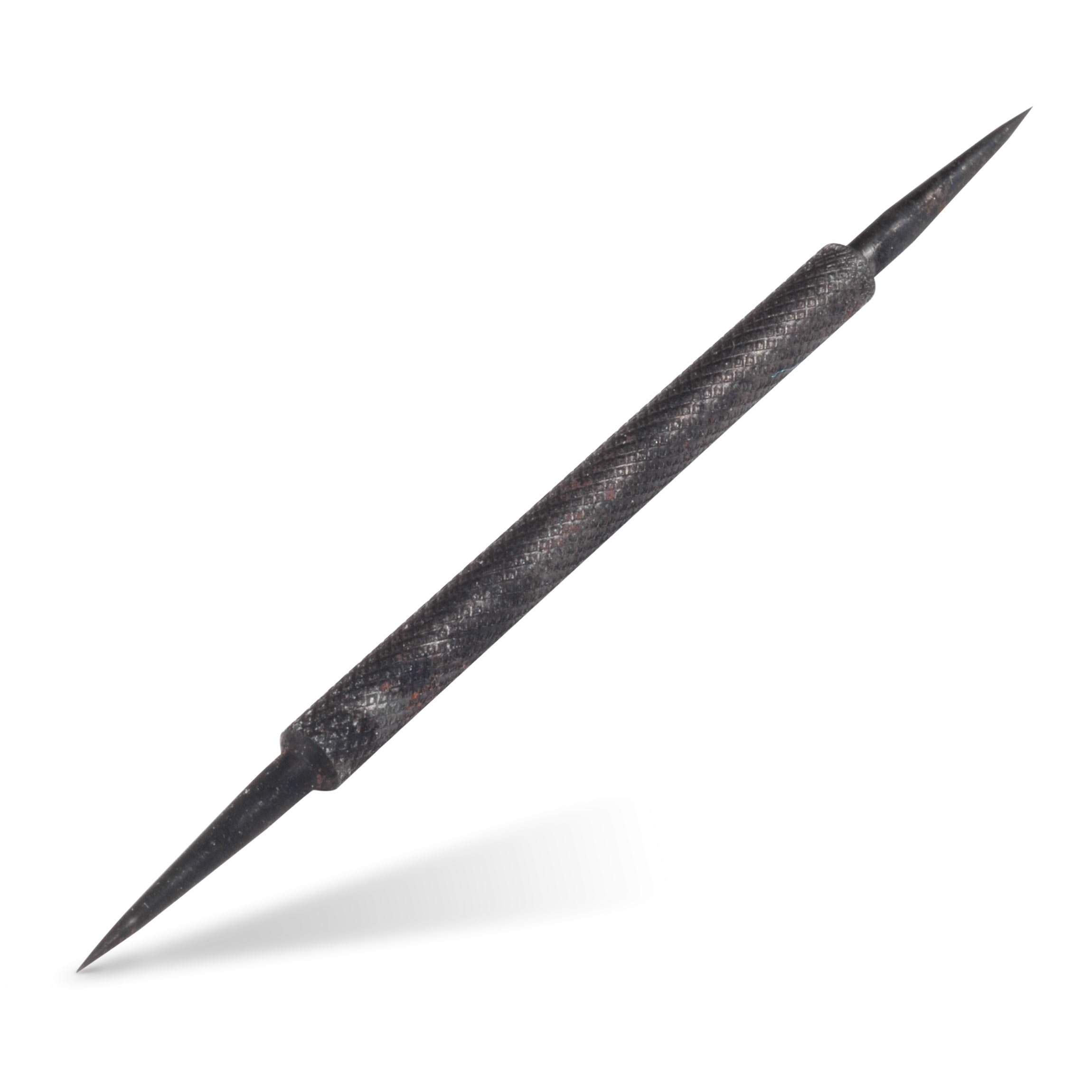Filing tuners to make them fit
Issue 269 August 25, 2016
The tuners on this Kay Speed Demon are nearly 50 years old, and they're worn out. The old tuners are 6-in-line, but not Fender spacing. Matt Brooker shows how he's modifying the replacement tuners to fit the guitar.
About the guitar in this video: Matt’s Uncle Jim got this Kay Speed Demon for Christmas in 1967. It’s been in the family all these years!
- Single-owner Kay Speed Demon from 1967
- String posts are 6-in-line, but not Fender spacing
- Where/how to remove metal to solve the problem
- Make a quick jig for accurate filing
Video Transcription
[on-screen text reads: Stewart-MacDonald Trade Secrets!]
Single-owner Kay Speed Demon from 1967
Matt Brooker: I got this cool old guitar from my uncle. It sounded great, but it wouldn't stay in tune [on-screen text reads: Filing Tuners to Make Them Fit]. The new tuners wouldn't fit the peg holes because the spacing was too narrow. It's a K speed demon that I got from my Uncle Jim [on-screen text reads: Matt Brooker, StewMac Tech Advisor]. It was his very first guitar and he got it brand new for Christmas in 1967. It's got a really cool style, really distinctive design, but I never really play it out live because it's so hard to get in tune.
The old tuners on this thing are shot. They turn really freely and they bind up under string tension, and you could just see there's a lot of play in those gears, because they're just old and worn out, and they were probably never that great to begin with. These were budget guitars when they were made, so they used inexpensive parts.
These new Gotoh vintage tuners [on-screen text reads: Gotoh Vintage 6-In-Line Tuners - stewmac.com] are a lot more precise and smooth. They've got a nice vintage look to them and they fit right into the peg holes. But when they're all in there, you can see they don't all sit flat to the peghead. They overlap each other, each bass plate kind of running into the one next to it. The reason for that is that these tuners are usually used on Fender and other guitars with wider spacing between each peg hole. But on the K, they're a little closer together, so the base plates are overlapping.
Making the tuners fit the guitar
So instead of making the guitar fit the tuners, I'm going to make the tuners fit the guitar. And the way I'm going to do that is by filing a little bit of material off of either end of these base plates, and that'll allow them to fit closer together to match this guitar's peg hole spacing.
But I'm not going to take that all off of one tuner because then the rest of them would still be all out of whack. I need to take the same amount off each tuner so that the spacing from one to the next stays consistent. So I need to know how many edges I'm going to be filing on. So that gives me 2, 4, 6, 8, 10 edges that I'm going to be filing on.
So I took my total difference in spacing from the new to old set and divided that by 10 edges, and that tells me exactly how much I need to file off of each edge. And for this guitar and for these tuners, what I found is I need to take about 7 1/2 thousandths of an inch off of each edge. And I'll show you how I'm going to do it.
Make a jig for accurate filing
I made a simple jig to hold the tuner out of this block of scrap wood. Exactly the amount of base plate I want to remove is hanging over the edge of the block, so it'll be easy to file. I marked a spot for the hole [Matt uses the Luthier's Digital Caliper to measure where the hole needs to be], so just the right amount of base plate at 7 1/2 thousandths of an inch hangs over the edge. Then I deepen the hole with a scribe [on-screen text reads: Inlay Tracing Scribe - stewmac.com] so it'll catch a Brad point drill bit [on-screen text reads: Fisch Brad Point Drill Bits - stewmac.com].
I've got an 8 thousandth Feeler Gauge here, rounded up for my 7 1/2 thousandths earlier. With a tuner in the jig. I could feel that the gauge and the bass plate are just flush to each other when I hold it up there. So that tells me I've got just the right amount of overhang here from the jig for filing it flush. The string post isn't centered between the top and bottom of the base plate, so I can't just use the same hole and turn the tuner around when I need to file the bottom. Instead, I've got another hole drilled down here at the bottom that gives me just the right amount of overhang on this side. I'm going to screw this thing down so it stays put, and I'll be ready to file.
Where and how to remove metal from the tuners
Before I start filing, I'll put a little bit of tape [on-screen text reads: Binding Tape - stewmac.com] over the seam where the gear housing meets the base plate, just to make sure that no metal dust or filings can work their way down into the gear.
The pillar file's [on-screen text reads: Pillar File - stewmac.com] great when you want to remove material in a hurry. It's got an aggressive cut, so I'm going to check myself pretty frequently. A few thousandths away. It's close enough now that I'm going to switch over to the mill file for a finer cut to bring it that last few thousandths.
On both sides now, I'm about 7 1/2, maybe 8 thousandths shorter than it was when I started. So that's right where I want to be.
Polishing out the file marks
My next step for this edge is to polish out the file marks, and for that, I'm going to use these micro mesh fret dressing sticks [on-screen text reads: Fret Dressing Stick with Micro Mesh Belt - stewmac.com]. Starting with the 120 does a good job of getting rid of those file marks. Going on the edge and also a little bit up on the corners just so there's not a sharp burr from filing. Here we go. And then I'm just going to move up through the grits till it looks good. Here's 240, 400, and I'm going to take it the rest of the way home with 800 and call that good. There's no scratch marks or file marks, nice and smooth and shiny.
[Matt uses the Micro Vacuum Hose Kit to vacuum up the shavings from filing]
All right, that edge is done. That's one down and nine more to go. A few of the screws wouldn't quite fit through the hole in the base plate after filing them. So I widened those with a large nut slotting file [on-screen text reads: Gauged Nut Slotting File - stewmac.com]. All right, there we go. Now the new tuners meet up nicely and there's no overlap on the base plates. There we go. That's a heck of a lot better. Now that this thing will stay in tune, I can actually trust it for a gig.

